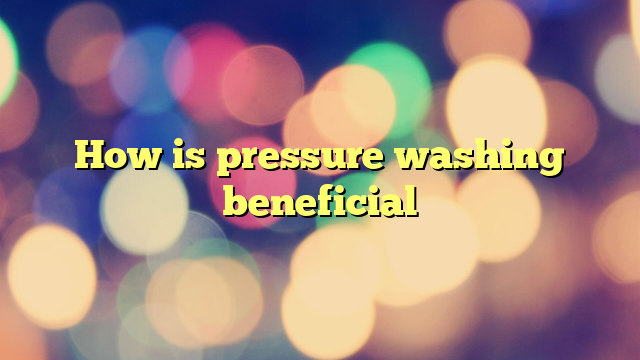A working clothes dryer is necessary for any household, but what happens when it stops drying clothes? Not only can it be frustrating, but it can also be a waste of time and energy. Fortunately, there are common issues that can be fixed to get your dryer back to working correctly. This article will explore how to fix my clothes dryer and provide solutions for fixing your clothes dryer.
We’ll cover it all, whether it’s a clogged lint filter or a malfunctioning heating element. So, let’s start fixing your clothes dryer and returning to hassle-free laundry days.
Importance of How to Fix My Clothes Dryer
- Saves time and energy by drying clothes quickly
- Prevents mold and mildew growth on damp clothes
- Reduces health risks and clothing damage associated with mold
- Helps prevent fires by minimizing lint buildup in the vent
Common Issues That Prevent a Dryer from Drying Properly
There are several reasons why a dryer may not be drying clothes properly. The most common issues include:
1. Emptying the Lint Filter
A clogged lint filter can prevent air from flowing through the dryer, which can cause it to overheat and stop working. To fix this, remove the lint filter and clean it thoroughly.
2. Checking the Exhaust Vent for Blockages
- Blocked exhaust vent can make dryer overheat and stop working.
- Check vent for blockages.
- Clear out any obstructions.
3. Checking for Kinks or Bends in the Dryer Hose
- Kinked or bent dryer hose can block airflow and lead to overheating.
- Fix by straightening the hose and ensuring it’s not kinked.
- Adequate airflow prevents the dryer from malfunctioning.
4. Checking the Power Source
- Insufficient power can cause a dryer to lack proper heating.
- Verify the power source to ensure the dryer receives adequate power.
5. Troubleshooting the Heating Element
- Heating element heats air in dryer
- Faulty element can lead to improper drying
- Troubleshooting steps:
- Check for power supply issues
- Inspect for visible damage
6. Testing the Heating Element
- Use multimeter for heating element continuity test.
- No continuity indicates a faulty heating element.
- Replace the faulty heating element.
7. Replacing the Heating Element
- Replace faulty heating element
- Refer to dryer’s manual for replacement instructions
8. Checking the Thermal Fuse to Fix the Clothes Dryer
- Thermal fuse prevents dryer overheating
- Faulty fuse can cause heating issues
- Check and replace if necessary
- Important for safety
- Ensure proper dryer function
9. Explanation of What a Thermal Fuse Is
A thermal fuse is a safety device to prevent the dryer from overheating. It’s located on the dryer’s blower housing or exhaust vent and is usually a small white or black device.
10. How to Test the Thermal Fuse
Use a multimeter to test the thermal fuse for continuity. If there’s no continuity, it means the thermal fuse is faulty and needs to be
11. Examining the Moisture Sensors
Many modern dryers have moisture sensors that detect when the clothes are dry and turn off the dryer. If the moisture sensors are not working properly, the dryer may not heat up or stop heating prematurely. To test and replace the moisture sensors, follow these steps:
- Unplug the dryer
- Find moisture sensors on front or rear bulkhead
- Check owner’s manual for sensor location
- Use multimeter to test continuity
- No continuity means faulty sensors
- Replace with new ones matching old specs
- Find specs in owner’s manual or old sensors
12. Examining the Thermostat
The thermostat is a component that regulates the temperature inside the dryer. If the thermostat is not working properly, the dryer may not heat up or stop heating prematurely. To test and replace the thermostat, follow these steps:
- Unplug the dryer.
- Find the thermostat on the heating element housing (refer to manual).
- Use a multimeter to test for continuity.
- No continuity means a faulty thermostat.
- Replace with a new one matching old specifications.
- Specifications in manual or on old thermostat.
Final Steps
After you have checked and fixed the common causes of a dryer not drying, you can take some final steps to ensure that your dryer is functioning correctly:
- Clean the dryer drum with a damp cloth to remove any remaining lint or debris.
- Run a test cycle to ensure the dryer is properly heating and drying the clothes.
- Consider implementing regular maintenance procedures, such as cleaning the lint filter after every use and having a professional dryer vent cleaning service performed annually.
Recommended Topics:
Frequently Asked Questions
Why is my dryer running but not drying?
There are a few possible reasons why a dryer may run but not dry clothes. One common cause is a clogged dryer vent, which can prevent hot air from escaping and cause the dryer to overheat. Other potential reasons include a malfunctioning heating element, a faulty thermostat, or a broken drum belt.
Why are my clothes still damp after drying?
If clothes are still damp after a drying cycle, it may be due to a clogged dryer vent, insufficient airflow, or a malfunctioning thermostat or heating element.
Why is my dryer not drying clothes but has heat?
If a dryer has heat but is not drying clothes, it may be due to a clogged vent or insufficient airflow. Other potential causes include a malfunctioning thermostat or heating element.
How do you tell if your dryer vent is clogged?
There are several signs that a dryer vent may be clogged, including clothes taking longer to dry than usual, a burning smell, excessive lint buildup, and hot or humid air in the laundry room.
How do you unclog a dryer vent?
To unclog a dryer vent, start by disconnecting the vent from the dryer and using a vacuum or brush to remove any lint or debris. You may also need to clean the vent duct with a specialized cleaning tool or hire a professional to clean the vent for you.
How do you clean a clogged dryer duct?
To clean a clogged dryer duct, start by disconnecting the duct from the dryer and using a vacuum or brush to remove any lint or debris. You may also need to clean the vent duct with a specialized cleaning tool or hire a professional to clean the duct for you.
Do dryers have reset buttons?
Most dryers do not have a reset button, but some models may have a thermal fuse or circuit breaker that can be reset by pushing a button or flipping a switch.
Why does my dryer work but take so long to dry?
If a dryer is working but taking a long time to dry clothes, it may be due to a clogged vent or insufficient airflow. Other potential causes include a malfunctioning thermostat or heating element or a too-large load of laundry.
How do I know if my dryer heating element could be better?
If a dryer heating element is bad, the dryer may still run but not produce heat. You can test the heating element with a multimeter to determine if it works properly.
Can I clean my dryer duct myself?
Yes, you can clean your dryer duct yourself with a vacuum or brush, but you may also need to use a specialized cleaning tool or hire a professional to ensure the duct is thoroughly cleaned.
Where could my dryer be clogged?
A dryer can be clogged in several places, including the lint filter, dryer vent, duct, or exhaust hood.
Can the dryer vent be clogged inside the dryer?
Yes, a dryer vent can become clogged inside the dryer if lint or debris builds up in the dryer duct or exhaust hood.
How do I check the airflow on my dryer?
To check the airflow on a dryer, remove the lint filter and hold a piece of paper or tissue over the filter slot. If the paper or tissue is not firmly in place, it may indicate a lack of airflow.
Will dryer shut off if vent is clogged?
Some dryers may have a safety feature that shuts off the dryer if the vent is clogged or the airflow is restricted. However, not all dryers have this feature.
How often do I need to clean my dryer vent?
You should clean your dryer vent at least once a year to prevent lint buildup and ensure proper airflow. However, if you use your dryer frequently or have a large household, you may need to clean the vent more often. Signs that your dryer vent may need cleaning include clothes taking longer to dry than usual, a burning smell, and excessive lint buildup.
Conclusion
A dryer that is not drying properly can be frustrating and time-consuming. Following the steps outlined in this article, you can troubleshoot and fix the common causes of a dryer not drying. Regular maintenance and prompt repairs can prevent future issues and ensure your dryer functions properly. Always prioritize safety and unplug the dryer from the power source before attempting any repairs or maintenance.





